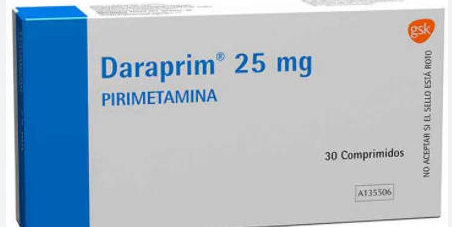
DARAPRIM 25mg Price
Active Substance: Pyrimethamine.
Overview
Welcome to Dwaey, specifically on DARAPRIM 25mg page.
This medicine contains an important and useful components, as it consists of
Pyrimethamineis available in the market in concentration
Name
Pyrimethamine
Precaution
Renal or hepatic impairment; folate deficiency; monitor blood and platelet counts every 2 wk with prolonged treatment and large doses. Discontinue use if skin reactions, sore throats or shortness of breath occurs. Lactation: enters breast milk, do not nurse
Indication
Acute malaria,Malaria prophylaxis,Toxoplasmosis
Contra indication
Hypersensitivity, resistant malaria, megaloblastic anaemia secondary to folate deficiency. Pregnancy and lactation.
Side Effect
Rashes, macrocytic anaemia (high dose), leucopenia, thrombocytopenia, megaloblastic anaemia, pancytopenia, abdominal pain, vomiting, atrophic glossitis. Depression, Fever, Insomnia, Lightheadedness, Malaise, Seizures, Dermatitis, Erythema multiforme Potentially Fatal: Cutaneous reactions e.g. erythema multiforme and Stevens-Johnson syndrome and toxic epidermal necrolysis with sulfadoxine at large doses.
Pregnancy Category ID
3
Mode of Action
Pyrimethamine is a folic acid antagonist structurally similar to trimethoprim. It inhibits parasitic dihydrofolate reductase, thus inhibiting vital tetrahydrofolic acid synthesis. It is active against pre-erythrocytic forms and is also a slow-acting schizontocide.
Interaction
Lorazepam may induce hepatotoxicity. Increased risk of bone marrow suppression when used with agents that have myelosuppressive properties e.g. proguanil, sulfonamides, zidovudine and cytostatic agents. Increased risk of serious pancytopenia and megaloblastic anaemia when used with co-trimoxazole or other sulfonamides.
Pregnancy Category Note
Information not available
Adult Dose
Child Dose
Renal Dose
Administration
